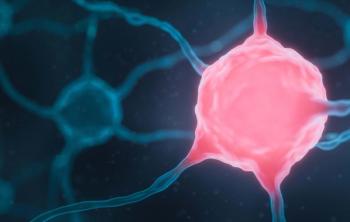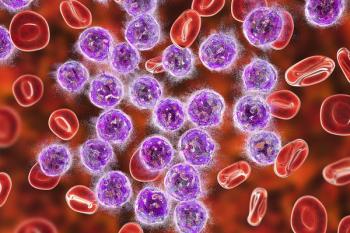
bb21217 Continues to Yield Improved, Durable Responses in Multiple Myeloma
The enriched chimeric antigen receptor T-cell therapy improved responses and prolonged duration of response in patients with relapsed/refractory multiple myeloma.
bb21217, an enriched CAR T-cell therapy, improved responses and prolonged duration of response (DOR) compared with non-enriched CAR T cells in patients with relapsed/refractory multiple myeloma, according to results of a phase I escalation and expansion study (NCT03274219) that were presented during the 2020 ASH Annual Meeting.
Additionally, the percentage of senescent CAR T cells decreased in the presence of the enriched CAR molecule (CAR+), called bb21217, according to investigators.
The study enrolled 74 heavily pretreated patients with relapsed/refractory multiple myeloma who had undergone ≥ 3 prior lines of treatment. The dose-escalation phase of the study used a standard 3 + 3 pattern, with CAR+ T-cell doses at 150 × 106 (n = 12), 300 × 106 (n = 6), and 450 × 106 (n = 6). In the expansion phase of the study, patients received CAR+ T cell doses of 300 × 106 (n = 8) and 450 × 106 (n = 37).
The primary end point was safety and secondary end points were response, progression-free survival (PFS), minimum residual disease (MRD), and CAR+ T-cell expansion and persistence. In the presentation, lead investigator Melissa Alsina, MD, presented data on 69 patients who had a median follow up of 5.8 months.
Median age was 62 years (range, 33-76), the majority were men (61%), and the majority were ECOG performance status 1 (59%). Prior to enrollment, 26% were International Staging System stage I, 25% were stage 2, and 19% were stage III. Thirty-three percent of the patients were found to have high-risk cytogenetics including del(17p), t(4;14), or t(14;16).
The median number of prior regimens was 6, including 97% receiving lenalidomide (Revlimid), 94% receiving a CD38 antibody, 93% receiving pomalidomide (Pomalyst), and 91% receiving bortezomib (Velcade). Eighty percent of patients were double refractory and 64% were triple refractory.
“Regarding safety and tolerability, the most common adverse event [AE] was grade 3/4 cytopenias,” said Alsina, an associate professor of medicine in the Blood and Marrow Transplant Program and head of the Multiple Myeloma Transplant Program, both at Moffitt Cancer Center in Tampa, Florida. “These were not dose related,” she added.
Median time to recovery for grade 3/4 neutropenia and grade 3/4 thrombocytopenia was 2.0 months and 2.2 months, respectively. Grade 3/4 infection was reported in 26% of patients, with 1 death from infection reported within 6 months, but in the absence of disease progression.
There were 2 deaths reported within 8 weeks of the bb21217 infusion, both attributed to cytokine release syndrome (CRS).
Regarding CRS, the median time to onset was 2 days (range, 1-20) with 70% of patients reporting any grade CRS. The majority of patients reported 65% of grade 1/2 CRS, 1% reported grade 3 and 3% reported grade 5. To alleviate CRS symptoms, 31 patients received tocilizumab (Actemra) and 10 patients received the combination of tocilizumab and corticosteroid.
Time to onset for neurotoxicity was 7 days (range, 1-24) and median duration was 2 days (range, 1-188). “Cases of neurotoxicity were rare and observed in 16% of patients for any grade neurotoxicity,” Alsina said. Two grade 3 events were observed: 1 case of encephalopathy occurring with grade 5 CRS and 1 case of dizziness/vertigo that resolved within 48 hours. One grade 4 encephalopathy was reported. The patient was treated with tocilizumab, corticosteroid, and cyclophosphamide.
The objective response rate (ORR) was reported as 68% with a stringent complete response (sCR)/CR of 29% and a very good partial response (VGPR) of 25%. Median time to first response was 1 month.
“We tested for MRD by next-generation sequencing, and the majority of the patients that had PR, were also MRD negative,” Alsina said. “Further, all the patients who were in CR were MRD negative,” she said.
Alsina noted that midway through enrolling patients for the 450 × 106 dose level, there was an update in the manufacturing process of the CAR T cells. The update required enrolling an additional 29 patients in the expansion phase of the trial. “When these patients were evaluated, we noted an ORR of 84% and an sCR/CR rate of 32%. Prior to this change, the ORR was 68%,” she said. The incidence of AEs, including all grades and ≥ grade 3 CRS and neurotoxicity, were similar between the 2 manufacturing processes.
When looking at the DOR, even after only a median follow up of 7 months, the median DOR was 17 months for the whole cohort. When stratified by dose, the 150 × 106 dose had an 11.5-month DOR, whereas the median DOR for the 300 × 106 and 450 × 106 doses were not evaluable.
The investigators noted that the enrichment for memory-like T cells was associated with peak CAR T expansion and response. Specifically, patients exhibited a significantly better peak expansion because of a higher proportion of memory-like T cells observed. It is believed this higher proportion was associated with the use of the bb21217 product. This is beneficial because a higher proportion of memory-like T cells is associated with numerically less disease progression.
The phase I study has completed enrollment and follow-up is ongoing.
“ORR, CR, and MRD negative rates are promising across the study and at the recommended phase 2 dose,” Alsina said. “Long-term CAR T cell persistence was observed in 6 of 11 evaluable patients at month 12 and 3 of 6 evaluable patients at month 18,” she concluded.
Reference
Alsina M, Shah N, Raje NS, et al. Updated results from the phase I CRB-402 study of anti-BCMA CAR-T cell therapy bb21217 in patients with relapsed and refractory multiple myeloma: correlation of expansion and duration of response with T cell phenotypes. Presented at: 2020 ASH Annual Meeting; December 5-8, 2020; Virtual. Abstract 130.
Newsletter
Stay up to date on recent advances in the multidisciplinary approach to cancer.





















































































